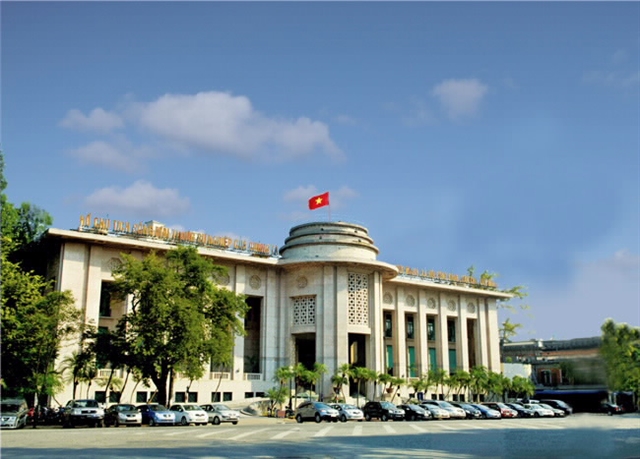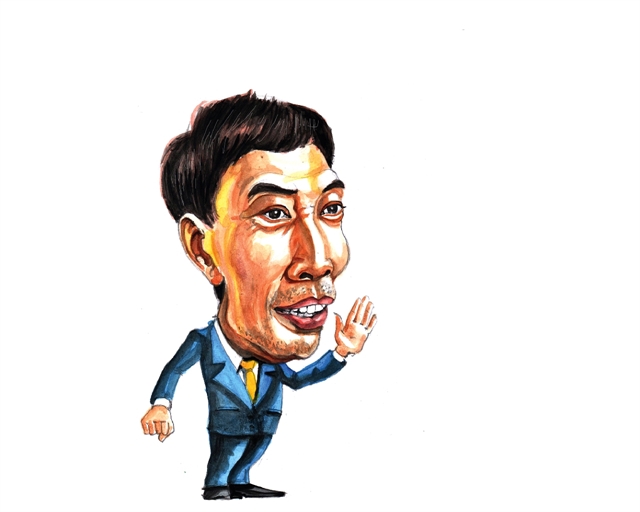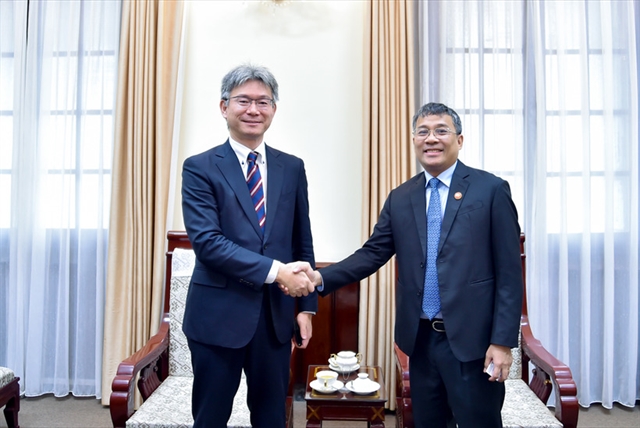 Economy
Economy

 |
Võ Trí Thành*
After the exchange rate shock in early 2011 that saw the Vietnamese đồng devalued by 9.3 per cent against the US dollar, the foreign exchange market has gradually stabilised, without considerable volatility.
The success was thanks to the central bank’s tightened monetary policy, the increase of deposit interest rates in much favour of đồng rather than US dollar, plus the restriction put on those eligible to borrow foreign currencies, and the increase of the country’s foreign reserves. The annual depreciation rate of Vietnamese đồng was in general just less than 2 per cent since then.
But in the fall of 2022, amid some external headwinds such as high inflation and the US’ Fed raising dollar interest rates to curb inflation – which put pressure on foreign exchange rates – and the shaking of the financial market, the State Bank of Vietnam (SBV) increased two times its main policy rates by total 200 basis points.
As the SBV reduced its direct foreign exchange interventions in late 2022, the Vietnamese đồng temporarily depreciated by nearly 9 per cent but pressures abated following the policy rate hikes. At the end of 2023 đồng only depreciated year-on-year less than 3 per cent. Since March 2023, as the macroeconomic and financial stability resumed, the SBV lowered its main policy rates four times by 0.5-2 percentage points to support the faltering economic activity. The exchange rate has remained stable and modest reserve accumulation has resumed in 2023.
However, over the past one to two months, the foreign exchange market has experienced strong volatilities. Notably, the đồng was weakened by as much as 4.9 per cent by the end of April, much higher than the rate of 1-3 per cent as expected by experts and analysts early this year.
The depreciation this time could be attributed to the confluence of global and domestic factors.
First, on the external front, the cooling of US inflation is slowing down, causing the Fed to maintain the monetary policy tightening. Though the agency planned to slash key interest rates three times this year, it has not yet determined a specific time to loosen its monetary policy and lower the interest rate. There is expectation that the Fed will cut its benchmark interest rate in a slower pace and with less extent in the near future, therefore, the US dollar value has still appreciated. The appreciation of the US dollar has led to the depreciation of the currencies of many countries around the world, including the đồng.
On the domestic front, the excess Vietnamese đồng liquidity, resulting from weak credit growth, has widened the interest rate gap between Vietnamese đồng and US dollar in the interbank market, with đồng interest rates remaining low and US dollar interest rates considerably higher. There are some point in time the interbank interest rate for Vietnamese đồng-denominated loans was reduced to nearly 0 per cent while that for US dollar-denominated loans was hiked to 5 per cent.
In addition, there is also a surge in the demand for foreign currencies as local firms need to import more input materials for production to fulfil the increasing orders while foreign direct investment firms are also transfering profits to their home countries.
It is also noteworthy that the VND/USD exchange rate is put under more pressure as gold prices have skyrocketed by as much as 16 per cent so far this year (and by 30 per cent since late 2022) as indicated in VinaCapital Economist’s Note dated April 26 this year.
Low interest rates of đồng deposits maintained by commercial banks have caused Vietnamese people to seek other financial investment channels that bring higher returns. They are also more enthusiastic in buying gold given an uptrend of international gold price. The trend ultimately entails the purchase of US dollar for importing gold (including smuggling), which means US dollar is more appreciated.
But what does đồng depreciation mean to the Vietnamese economy?
Theoretically, a depreciated currency supports exports as a weak currency means that domestic goods are cheaper abroad. Therefore, in an open economy as Việt Nam, a competitive exchange rate would help boost exports, especially when the country still depends on exports as a driver for growth in the recovery period post COVID.
However, an excessive depreciation would in turn cause more inflationary pressure due to rising prices of imports. Moreover, when interest rates in one country are higher than in others, investors may seek to take advantage of the higher returns by moving their capital to that country. This can result in a substantial outflow of investments from countries with rather low interest rates, which ultimately have negative impacts on international balance of payments.
In other words, in an open economy, central banks always face a policy trilemma while trying to manage conflicting goals which are total capital mobility, a fixed exchange rate and autonomous monetary policy. It is not possible to achieve all three at once.
As Việt Nam navigates the global economic headwinds, the complex challenge that the SBV is grappling with is maintaining the relative stability of exchange rate while supporting the economic growth – a priority in Việt Nam's economic policy.
To stabilise the exchange rate, in the past, the SBV has employed a multi-pronged approach. It has withdrawn excess liquidity of đồng from the system by issuing treasury bills to Việt Nam’s commercial banks, which help raise interbank overnight interest rates, managed the central exchange rate to deter speculation and currency hoarding and promoted export loans to boost foreign currency supply. The central bank also signalled the readiness to make an immediate intervention if the exchange rate experiences any unfavourable development.
It is forecast that the pressure on exchange rate will be eased with the depreciation of đồng against US dollar might be around 3 per cent by the end of the year. Compared to other currencies, the level is reasonable when taking into account some factors.
First, it is speculated that the Fed will sooner or later cut interest rate though the number of cuts might be fewer. In fact, after the Fed announced in its latest meeting on May 1 that it still kept their benchmark lending rate at a 23-year high, the buying and selling prices of US dollar quoted at commercial banks saw a slight decrease and even unchanged in recent days.
It is very unclear when the Fed will finally begin to reduce interest rates, but Fed leader Jerome Powell has said that there are multiple scenarios that could begin rate cuts, including a scenario in which inflation resumes its slowdown as both the economy and job market remain strong, according to CNN.
Second, the interest rates for đồng deposits offered by commercial banks have started to inch up as the sign of economic recovery becomes apparent.
Third, the gold market is forecast to be gradually stabilised with the SBV’s decision to increase official supplies along with amendments to Decree 24, which is expected to help the local market develop in line with the world one.
With an affirmation from a SBV leader that: "We cannot sacrifice exchange rates for interest rates but must ensure harmony between interest rates and exchange rates," it is expected that SBV will keep an accommodative monetary policy and allow a more or less acceptable devaluation of the đồng.
The key for an appropriate choice of exchange rate regime in Việt Nam is assurance of competitiveness and some degree of exchange rate flexibility, which creates a room for monetary policy manipulation. At the same time, as policy response is constrained by the “policy trilemma”, strengthening financial supervision and macroeconomic policy coordination is needed. In any case, ensuring macroeconomic stability is crucial. All that are important for the long term goal of balance of payments’ liberalisation and Vietnamese đồng-currency convertibility.
*Võ Trí Thành is a former vice-president at the Central Institute for Economic Management (CIEM) and a member of the National Financial and Monetary Policy Advisory Council. A doctorate in economics from the Australian National University, Thành mainly undertakes research and provides consultation on issues related to macroeconomic policies, trade liberalisation and international economic integration. Other areas of interest include institutional reforms, financial systems, and economics of development. He authors Việt Nam News column Analyst’s Pick.




